Providers implement automation and explore staffing options to streamline revenue cycle
Healthcare leaders are combining traditional and new levers to reduce waste in their revenue cycle processes, aiming to improve patient experience and control costs. From managing vendor relationships to addressing the staffing shortage impacting the entire industry, stakeholders are revisiting infrastructure to strengthen internal processes so they can maximize use of technology.
Cost reduction remains top of mind for leaders, but not at the expense of quality — for instance, with customer service and user experience in revenue cycle. In this roundtable, sponsored by R1, finance leaders discuss tactics they’ve used to implement automated tools and extend their workforce.
Todd Nelson, Moderator: Is your organization using automation such as robotic process automation (RPA) or considering automating process to reduce costs? And if so, how are you approaching that automation?
Amy Assenmacher: Spectrum Health is focused on utilizing automation in the revenue cycle. We have found ways to optimize the use of our EHR platform so that we’re not spending money on a variety of bolt-ons. We have partnered with an RPA vendor and are surveying our team to identify different opportunities for automation, repurposing staff to do things that are more complex and challenging.
Matthew Cox: We believe that the future is going to be more automated and more self-service specifically as relates to a revenue cycle. We’re thinking about how we can implement solutions that will make it easier for patients at a lower cost. We know that patients want to be able to self-schedule, so we’ve been doing a great deal of foundational work. You can’t just automate a bunch of old broken processes. You have to standardize, simplify and then automate.
Gordon Edwards: We’ve started the RPA journey at Marshfield and are in the midst of replatforming. We don’t want to automate what is a poor design and process within our system. And we’ve got to figure out how to do it with fewer people, not from a cost-savings perspective, but because the people aren’t there. You have to get to standardization to better automate processes and make it easier for people to self-serve and interact with your system.
James Dietsche: To staff, process automation can be frightening, making them think about job elimination. Bellin Health is trying to focus on taking away mundane tasks, so staff can prioritize those more involved conversations, the ones that you can’t automate, with the people we serve. It’s redesigning the system and getting to the why, so that people understand why you need to introduce these concepts.
Jill Myers: From a rural viewpoint, we don’t have the staff, the layers, the budget. When Henderson looks at automation, we have to approach it methodically because it can disrupt revenue cycle and patient experience. We take a lot of time researching a platform that can do as much as possible.
Moderator: How much time have you all spent thinking about self-developing some of this automation versus going to what might be commercially available in the market? Also, there’s so much noise in this space about RPA, how do you cut through that?
Julie Grow: Vendors have to understand what it’s like to work with a rural provider that doesn’t have a lot of resources. At Hocking Valley, you’re looking at teams who wear many hats, and so it’s important that a vendor is able to work with the smaller organizations and provide additional support.
Myers: We’re looking for a vendor who can build a system that can be customized, who’s going to be there upfront — in the build process and the implementation — so that we get it right, and then we can train our staff, so we’re more hands off long term.
Edwards: You have to vet and pull apart what is really there and what [is needed] to make it work. We built our own EHR but reached the conclusion that the effort to continue self-development long term isn’t as feasible as using a commercially viable product. But we’re still going to self-develop around the commercially viable product because that’s who we are. And so you’ve got to find partners that work with the culture of your organization.
Moderator: Is there a peer group that you go to and discuss what’s working for you?
Assenmacher: We’re part of a large health system revenue cycle council through HFMA, which includes 30 organizational peers in the industry, and also formed a smaller group that meets monthly to discuss surprise billing, price transparency and vendor partnerships. Word-of-mouth is critical. If another organization has taken the software for a spin and can prove its value, that is usually the last stop before we select. We also have a rigorous vendor management program within revenue cycle that we rely on for scoring and evaluation of solutions. And we make sure we have key stakeholders help weigh in on the decision. It’s a coordinated, collaborative approach, which I think is key to selecting any vendor.
Cox: Our thought partner, McKinsey & Company, helped us put together a framework on how to manage automation. We are hiring a director of automation that reports up through the CIO, and there’s a committee that looks at automation through a return on investment model. We’re rolling it out in human resources, finance and supply chain. It’s a hybrid approach where sometimes we’ll partner with a vendor and other times we build it ourselves depending on the return on investment.
Moderator: With the explosion of technology suppliers, can you expand on how you’re applying vendor rationalization or consolidation strategy to the technology solutions?
Dietsche: When looking at vendors, ideally they’re more of a single source vendor with multiple products that can solve problems. We want to find a product that will integrate as effectively as possible, [and we] are making more investments in these omni-channel processes and trying to bring in a CRM product, chat bot and other things that can work together.
Cox: We’ve often said that once we’ve turned everything on in Epic, we’ll consider additional bolt-ons. We have the same approach with Workday, our ERP system. If there’s a gap, and it’s on the vendor’s work plan, we can use that. When you have a single-source system, things come together, and you don’t have two interfaces that break every time you do an upgrade.
Edwards: There are organizations that are trying to screen technology vendors, to narrow a selection that providers can tap into. We have taken a look at some of those platforms to see if it will help streamline work processes around selection.
Moderator: How do business leaders work with their IT groups to determine how these decisions are made?
Edwards: Our platform is Cerner, and if we’re looking for a solution, they’re invited to share their solution, but we will look at others. Our business leaders drive the process, and IT is at the table when we’re evaluating.
Grow: We keep our IT department involved and have them be directly in touch with the vendors, which helps with buy-in. They’re my eyes and ears, because every vendor you add on to your system is another window cracked for a cybersecurity issue. So it’s important that we get them on board.
Moderator: Is your organization doing patient self-service and positioning it as a cost reduction lever? If so, what patient touch points do you view as the biggest opportunities for self-service?
Myers: Patient satisfaction and staffing shortages are probably our key drivers. Healthcare has to be consumer driven, and people are looking at working in a lot different capacities and locations than they were before. You also want remaining staff to operate at the high end of their scope.
Assenmacher: When you think about the front door to the organization, that’s a point where a patient can decide whether or not they want to engage with your facility. From a patient experience perspective, there can be many financial challenges, and so you can make the financial assistance application process, payment plans, online billing, all those things more seamless for the patients.
Cox: I think it’s about the “and.” Right now there are enough opportunities where it can be great for patients, and it can save money. When those things align, those are the easy decisions for us. If we run out of “ands” for instance, something that is bad for patient experience but saves money, we’re not going to do it. It’s got to hit both.
Edwards: As we think about what the consumers want, our patients run the gamut, those who want to self-schedule, those who want to call and those who want to come in. That’s what we’ve got to tailor ourselves to. With the workforce shortage, I don’t view this as a cost-saving strategy. This is about a survival strategy because we just don’t have people to do what we had designed, and that’s what we’ve got to change. Our labor force is changing, and so we really have to be more creative to get our work done.
Moderator: Thinking about outsourcing revenue cycle, how does your organization define it and how is it perceived? What new staffing and partnership models are you considering in the next 12 to 18 months to address labor concerns?
Grow: We’ve outsourced our revenue cycle for the past several years now. That decision was made because it takes a solid year and a lot of training to train a biller. When we would lose someone, it was very difficult to replace them and as a small organization, if a biller is out of office, there just wasn’t somebody else to pick up the work. To adapt it to fit our rural community, they also placed somebody at our organization. I don’t know where we’d be at this point without that relationship.
Assenmacher: We critically looked at our cost to collect and with staffing challenges, as in the access and inpatient coding space, we’ve had to rely on contracting to supplement those operational areas. I do feel there is a place for partnering with vendors to ensure you’re delivering an exceptional, high-quality patient experience while also managing your cost to collect.
Dietsche: Similarly, we’re going to more critically look at an extended business office with an outside party to help us during off hours, and we’ve done some contract coding. We historically outsource certain service lines, but we’re going to look at those things more as we lose those inpatient coders.
Edwards: We’ve always done some level of contracting, but viewed it more as an extension of the existing teams, supplementing to fit a need. If you just say the word outsourcing, there’s a real perception of loss of jobs in communities. I think the pandemic’s proven to us that I can have revenue cycle people in a variety of other places around the country that can help supplement changes in the workforce. There’s opportunities for us to also rethink what we expect from folks.
Moderator: At what point does the need for outsourcing outweigh that negative connotation? Is the health system’s core focus to provide care to the community or is it also just as important to be the largest employer in town?
Edwards: Part of why employees are drawn to the organization is our mission around enriching lives and creating healthy communities. Sometimes with a vendor partner, you don’t have that same passion, which comes through in terms of service, responsiveness, a lot of different ways. With partners, you’ve got to have that connection, that everybody is pursuing the mission of the organization.
Moderator: It’s not just about money, it’s about interaction with patients. The question also may be, as we move forward, does the labor shortage self-correct to some degree, a forcing factor for different ways of doing things?
Cox: Supplementing our staffing for the surges is something that makes sense for us, but we want to control the messaging: How are people asking for money over the phone; are they embodying our core values into their script? Also, I don’t want somebody that works on my account on one call and then works on another health system’s account on their next call. It has to be 100%our mission, vision and values.
HFMA Roundtable
PANELISTS
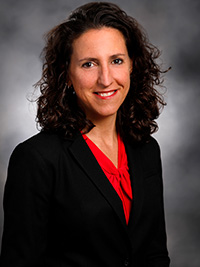
Senior vice president, revenue cycle, Spectrum Health in Grand Rapids, Mich.
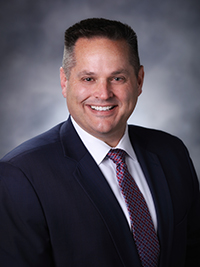
Senior vice president/CFO, Spectrum Health in Grand Rapids, Mich.
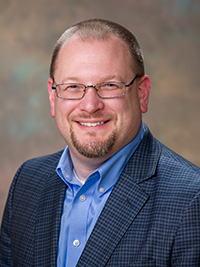
Chief operations and financial officer, Marshfield Clinic Health System in Marshfield, Wisc.
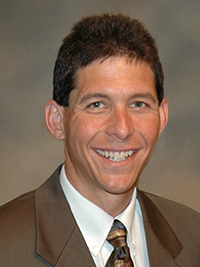
CFO, Bellin Health in Green Bay, Wisc.
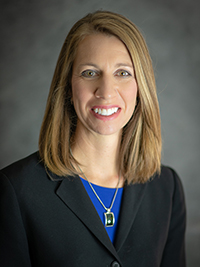
CFO, Henderson Health Care Services in Henderson, Nev.
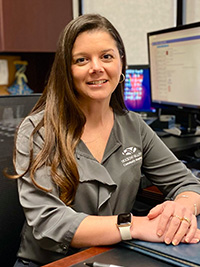
Vice president of finance and CFO,
Hocking Valley Community Hospital in Logan, Ohio
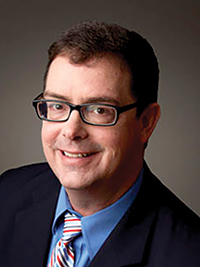
TODD NELSON
Director, partner relationships and chief partnership executive, HFMA in Westchester, Ill.
This published piece is provided solely for informational purposes. HFMA does not endorse the published material or warrant or guarantee its accuracy. The statements and opinions by participants are those of the participants and not those of HFMA. References to commercial manufacturers, vendors, products, or services that may appear do not constitute endorsements by HFMA.





